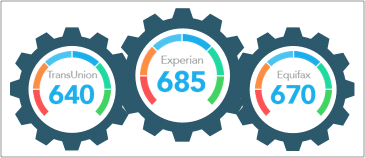College tuition and fees continue to rise, so you’ll likely need to borrow money to cover the cost of your education. Fortunately, the U.S. Department of Education, through its Federal Direct Loan program, offers subsidized and unsubsidized loans to help you pay for college. While both loan types offer low fixed interest rates and flexible repayment options after you graduate, a subsidized loan is cheaper on average.
Subsidized Loans vs. Unsubsidized Loans: What’s the Difference?
The difference between subsidized and unsubsidized loans boils down to your financial need and when you pay interest. While you’re enrolled in college and while in loan deferment, the government pays the interest on subsidized loans, which makes a subsidized loan less expensive than the unsubsidized version.
Subsidized loans are only available to you as an undergraduate student if you qualify based on your or your family’s financial need.
The government doesn’t pay the interest on unsubsidized loans, however. You’re allowed to delay paying interest while you’re enrolled, but any interest you don’t pay gets added to your principal. Interest accrues on your loan from the first disbursement. Undergraduate, graduate students and professional students can take out unsubsidized loans and don’t need to show financial need to qualify.
You can figure out which student loan type is right for you by comparing each loan’s qualifying standards and repayment terms.
Basic Eligibility Requirements for a Student Loan
To qualify for a federal student loan, you must:
- Have a social security number
- Be a U.S. citizen or eligible non-citizen
- Be registered for Selective Service (for males between the ages of 18 and 25)
- Maintain at least half-time enrollment in a college that participates in the Department of Education’s student loan program.
- Be enrolled in a program of study that results in an undergraduate degree or certificate.
You must show that you’re qualified to apply to college with a high school diploma or GED. Homeschool students qualify for student loans with proof of education in a state-approved setting. You also must maintain satisfactory academic progress to qualify for student loans every academic year you’re enrolled.
Subsidized Loan Details
Because of the way that interest payments work with a subsidized loan, it offers one of the most cost-effective ways to borrow money for college.
Instead of sending you a bill for the interest while you’re in school, the government makes the payments on your behalf as long as you remain enrolled and in good academic standing. You only start paying principal and interest after the six-month post-graduation grace period or your deferment period ends.
Subsidized student loan amounts tend to be lower due to the significant benefits paid by the government. For this reason, undergraduates can borrow up to:
- $3,500 during the first year
- $4,500 during the second year
- $5,500 during the third year and beyond
You might still qualify for a subsidized student loan even if you don’t finish your undergraduate degree or certificate on time. Overall, the Department of Education limits the total amount you can borrow in subsidized loans to $23,000.
Unsubsidized Loan Details
As an undergraduate, your school might offer you unsubsidized loans if you don’t qualify for a subsidized loan. Unsubsidized loans aren’t based on financial need, so you don’t have to show an inability to pay in order to qualify. Instead, your college calculates your total cost after applying all other types of financial aid—like scholarships, grants and subsidized loans—before offering you an unsubsidized loan.
The downside of an unsubsidized loan is that the government does not pay interest while you are in school. Instead, that interest accrues until you graduate. After your 6-month grace period, you are then liable for the principal and all accrued interest.
Independent undergraduate and graduate students may prefer unsubsidized loans because of the higher amounts available, which are:
- Up to $6,000 for first- and second-year students
- Up to $7,000 for third-year students and beyond
Undergraduate students can borrow no more than $34,500 in unsubsidized loans to pay for college. Graduate and professional students can borrow up to $20,500 per academic year, keeping in mind the limit of $138,500, which includes undergraduate loans.
How Do I Apply for Student Loans?
The process of determining eligibility for any student loan—subsidized or unsubsidized—starts with filling out the Free Application for Federal Student Aid (FAFSA). If you’re a dependent student, both you and your parents need to fill out the FAFSA. The Department of Education reviews you and your family’s income and assets to decide if you’re eligible for a subsidized loan. The Department of Education processes your FAFSA and sends it to the school you plan to attend.
Your college prepares a bill and applies various financial aid types based on the information you provided the FAFSA. If your college offers you student loans, the good news is that you don’t need a credit history, credit scores or a co-signer to borrow. Remember, you can always turn down part, or all, of any student loan offered to you, especially if you have another way to pay your bill.
Alternatives to School Loans to Help Pay for College
Some students have parents or grandparents that might be saving up for your college education, and that amount of money lowers the size of the loan you need to borrow. As an adult going back to school, you may have money set aside to earn a degree. Ideally, tap your savings account first.
Savvy prospective college students also weigh the sticker prices of colleges they are considering, as well as scholarships and grants each college offers. Being offered a full scholarship provides a great incentive to attend a more expensive school. You can also weigh higher education options closer to where you live to save money on room and board.
You might also consider your major when deciding how much to borrow. You can keep your student loan payments manageable by borrowing no more than 10 percent of your potential salary. Online resources like Glassdoor and Payscale can help gauge your earning potential based on your desired career.
In Closing
Both subsidized and unsubsidized loans provide a low-cost borrowing option to pay for college, but it’s important to borrow wisely. After college, you must repay your student loans with interest and on-time in order to maintain a good credit rating. Borrowing only the amount of money you need is the best way to ensure a prosperous financial future.




